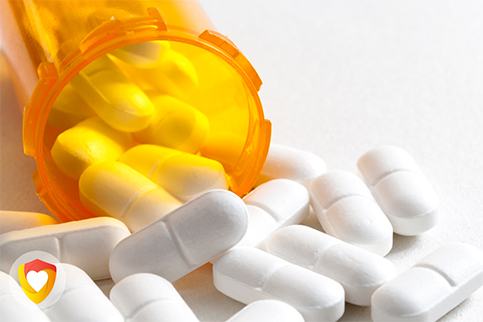I recently treated a couple made homeless due to the COVID-19 pandemic. They lost an already tenuous income and their marginal housing with a friend. Now living out of their car, they had increased their heroin and Xanax use and were trying to stop. They came to the emergency department (ED) asking for help managing withdrawal symptoms.
With the media focus on COVID-19, it’s easy to forget that the coronavirus is riding the coattails of our generation’s first great epidemic: opioid use disorder (OUD). Even before the coronavirus arrived, 130 Americans were dying from an opioid overdose every day. Tragically, this number has likely increased in recent months.
Peter Grinspoon, MD, a primary care provider who treats people with OUD, points out that these overlapping pandemics are “additively deadly” and that they highlight many lingering weaknesses in our healthcare system. In this post, I’ll share some of the challenges facing patients with OUD and other substance use disorders (SUDs), plus steps emergency departments can take to improve care for this vulnerable population.
“A Scary Time” for SUD Patients
Nora Volkow, MD, director of the National Institute on Drug Abuse, has called the pandemic “a very scary time” to be a person with heroin addiction. She notes that substance use tends to increase during disasters as people attempt to cope with stress and anxiety. What’s more, evidence suggests that this effect can linger for years. Three years after Hurricane Katrina ravaged New Orleans, substance use-related hospitalizations were elevated 35% above pre-disaster levels. While overall we’ve seen dramatic declines in ED visits for all diagnoses—strokes, depression, injuries, etc.—Vituity’s internal analysis shows substance use visits have been the least impacted. We continue to see almost the same number of visits related to drug use as before the COVID-19 pandemic.
These statistics raise grave concerns about the 2 million patients living with OUD in our country. Among the first issues we must consider is access to care. The OUD population tends to be underserved by the healthcare system, and the pandemic is likely to make things worse. Many clinics and outpatient treatment programs are temporarily closed or have limited hours. Some states have closed syringe exchange programs and other harm reduction organizations, deeming them “nonessential” services.
Those currently in treatment could also face interruptions. Methadone, a conventional medication for addiction treatment (MAT), is typically dispensed each day in person at outpatient treatment centers. Some of these clinics treat thousands of patients a day. This can be especially alarming to some people with OUD who have underlying health problems (hepatitis, HIV) and socioeconomic challenges (incarceration, housing instability) that put them at higher risk for severe COVID-19.
Physical distancing also creates unique challenges for people with OUD because social isolation is a risk factor for relapse and substance misuse. In addition, using opiates while alone increases the risk of death by overdose, because no one is present to administer a rescue dose of naloxone. (Dr. Grinspoon notes that cases have surfaced of law enforcement refusing to administer overdose reversal medication, citing fears of coronavirus transmission.)
And finally, patients with SUD may lack the social supports to navigate the pandemic safely. Housing insecurity, lack of access to technology, interruptions in public transportation, and ever-present systemic discrimination may make it difficult to physically distance while accessing needed healthcare services.
A Silver Lining?
While this is a difficult time for patients with SUD, the pandemic might improve care for this population over the long term. The pre-pandemic model of treatment emphasized frequent (sometimes daily) in-person visits. This approach demands both time and access to transportation. It’s especially burdensome to patients in rural areas, who may need to travel long distances for care.
Strangely, the coronavirus pandemic has been a catalyst for positive change in OUD treatment. The relaxing of telehealth and prescribing guidelines beyond the current public health emergency could improve access to care and allow more people to benefit from evidence-based treatments like MAT.
“In some cases, emergency medicine providers can treat OUD patients entirely via telehealth and even induce some forms of MAT (e.g., buprenorphine) at home.”
Gregg Miller, MD
Chief Medical Officer
How EDs and hospitals can help
EDs represent a potential lifeline for people with OUD. With evidence-based treatments now available, a single visit with an informed emergency medicine provider can start a patient on the road to recovery. What’s more, emergency waivers and relaxed regulations are increasing treatment options for this population.
So how can emergency medicine providers and their hospitals help?
- First, it’s essential to update your department’s protocols for managing OUD. In response to the national emergency, CMS, SAMHSA, and the DEA have relaxed many of their previous regulations around treatment. States can now apply for waivers that allow providers with a DEA-X waiver to prescribe a 14-to-28-day supply of MAT for “stable” patients. In some cases, emergency medicine providers can treat OUD patients entirely via telehealth and even induce some forms of MAT (e.g., buprenorphine) at home.
- Next, stay connected to what’s happening in your community. Will outpatient treatment programs accept new patients during the pandemic? If so, how will these patients be managed? The answers will likely impact your clinical decisions in the ED.
When possible, provide patients with information and referrals that promote care continuity, such as:
- Outpatient treatment programs (virtual and in-person)
- Syringe exchange and harm reduction programs
- Housing assistance (including short-term quarantine housing)
- Pharmacy delivery
- Technology assistance
- Finally, find ways to support advocacy around OUD treatment directly. Examples of patient-centered initiatives include relaxing counseling requirements for patients undergoing MAT during the COVID-19 pandemic and ensuring that your state is taking advantage of waivers that allow extended prescriptions for MAT medications and MAT initiation by telehealth.
Given the budget shortfalls many states are experiencing due to the pandemic, it’s critical to advocate against state and local budget cuts that impact access to behavioral health and recovery programs such as MAT. These are critical and often life-saving programs that our communities cannot afford to lose, and if funding is cut now, we run the risk of not resuming them once the pandemic ends.
See this Health Affairs article for detailed information on the above strategies. For more information on the benefits of incorporating a MAT program in your ED and resources to help implement one, please check out this article written by Vituity’s MAT program director, Dr. Dylan Carney.
I was able to treat the couple successfully with several doses of buprenorphine in the ED. Our social worker connected them to a local MAT clinic that, despite the pandemic, is open for business and is providing more support via telehealth. Coming to the ED for help was a great first step, and I hope that with their substance use under better control, the couple will be able to get back on their feet. Opioid use is likely worsened by COVID-19, and continued innovation is needed to address both epidemics.























